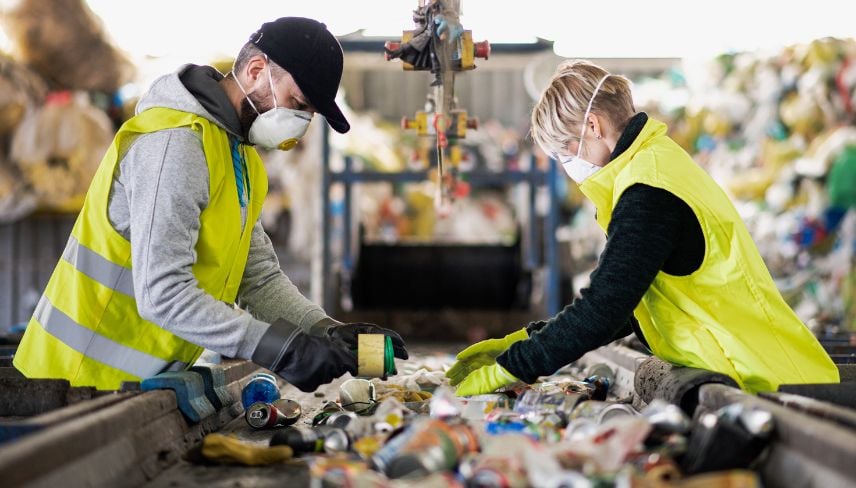Recycled Plastics in Electronic Products and Textiles: Sustainability, Compliance, and Safety

23 Jun 2025
From consumer electronics to textiles, plastics use is everywhere. As products become “smarter” and the green innovation accelerates, the demand for recycled plastics continues to grows – driven by the need to reduce waste and support a circular economy.
With that shift, the responsibility to ensure that these plastic plastics are safe, traceable, and compliant with global regulations becomes ever more critical.
But with that comes a big question – How can companies mitigate the risks associated with recycled plastics and navigate an increasingly complex supply chain?
The Consequences of Overlooking Risk in a Complex Supply Chain with Recycled Plastics
Without a robust strategy to identify, trace, and manage these risks, companies may risk introducing harmful substances, leading to regulatory non-compliance, market access issues, and costly recalls. Inconsistent material quality can also affect product performance and safety, undermining consumer trust. Moreover, in an era of increasing transparency and scrutiny, failing to substantiate sustainability claims can result in greenwashing accusations, reputational damage, and loss of competitive advantage.
Failing to manage these risks can turn a green initiative into a costly setback.
Traceability Matters
Companies face increasing pressure to ensure that sustainability claims are accurate, verifiable, and appropriately labeled. In this context, validated and trusted testing and reporting have become essential for stakeholders across the supply chain.
Enhancing visibility into the origins and movement of recycled plastics throughout the supply chain allows manufacturers to substantiate their sustainability claims and fosters greater transparency and coordination with supply chain partners.
To meet these demands, many companies are turning to tools like blockchain technology and advanced digital supply chain systems. These solutions help track recycled plastics, ensuring materials are safe, responsibly sourced, and aligned with sustainability goals.
The Hidden Challenge - Restricted Substances
As recycled plastics become more common in sustainable product design, managing residual hazardous substances is essential. Regulations applicable to restricted substances vary depending on the market and materials used, but can include:
- RoHS Directive - restricts 10 hazardous substances (at the homogeneous material level) in electronics in the European Union (EU).
- REACH - requires companies to manage chemical risks in products sold in the EU.
- California Proposition 65 - mandates warnings about chemicals that may cause health risks.
- Conflict Minerals Regulation – ensures ethical sourcing of minerals (e.g., tin, tungsten, tantalum, gold).
Even products not originally subject to regulation may now be covered by one of the above regulations as updates and amendments to the requirements include and effect additional product categories and additional Substances are added. This includes updates and amendments including the expiration of for specific use cases for certain substances.
Stay Compliant - Continue to Monitor Regulatory Development
To stay complaint with regulations requires a strategic approach. There are several steps to consider:
- Implement supply chain oversight: Establish a robust supply chain management system that tracks the flow of recycled materials—from the source to the finished product.
- Educate and align stakeholders: Ensure all supply chain stakeholders understand the risks of restricted substances and the importance of responsible material selection and handling.
- Choose certified, traceable sources: Prioritize recycled content from vendors with certified processes and clear documentation of origin and treatment.
- Regularly test and verify substances: Conduct testing to screen for substances restricted under the RoHS Directive, REACH, or similar legislations.
- Verify physical properties - Test physical properties like melt flow to ensure product compatibility.
- Build a compliance management system: Integrate processes for identifying, addressing, and monitoring non-compliance. Maintain a Technical Documentation File (TDF) to document your product’s design and regulatory status.
- Collaborate for Continuous Improvement: Partner with recyclers, suppliers, and industry groups to exchange best practices and enhance control of restricted substances across the recycling ecosystem.
- Monitor the Rapidly Changing Requlatory Environment: Ensure that all entities in the supply chain are aware of and respond to changes in requlatory requirements.
Final Thoughts
Recycled plastics are no longer niche materials; rather, they are becoming the new standard in product design. Companies adopting recycled plastics must also be vigilant in managing compliance and safety. By embedding strategic processes and partnering across the supply chain, companies can create products that are sustainable, complaint and safe.
Intertek Assuris is Here to Help!
Intertek Assuris offers end-to-end support, helping your business through the entire product life cycle, from the design stage to the final product disposal stage.
To learn more about our restricted substances services, visit: https://www.intertek.com/assuris/restricted-substances/
